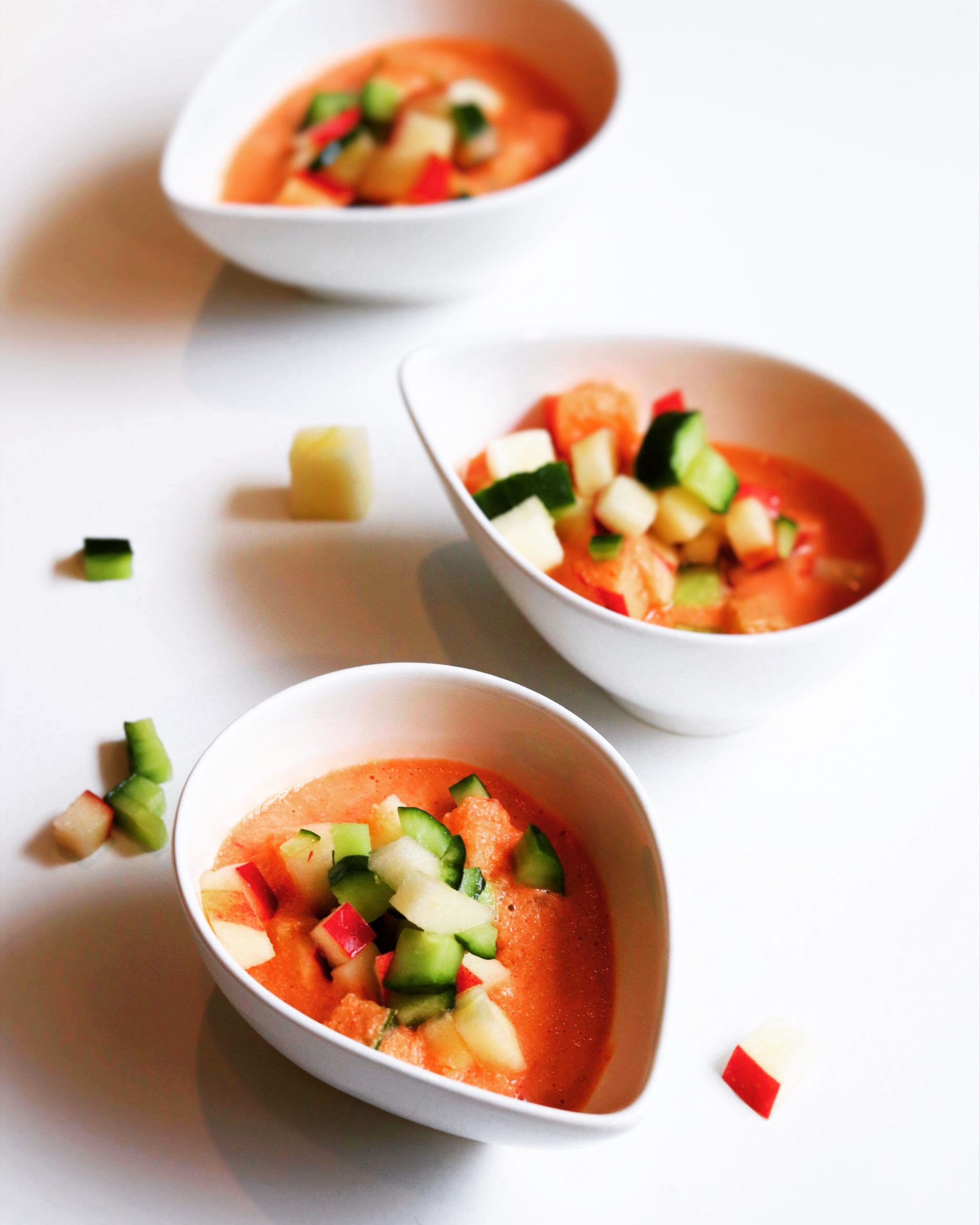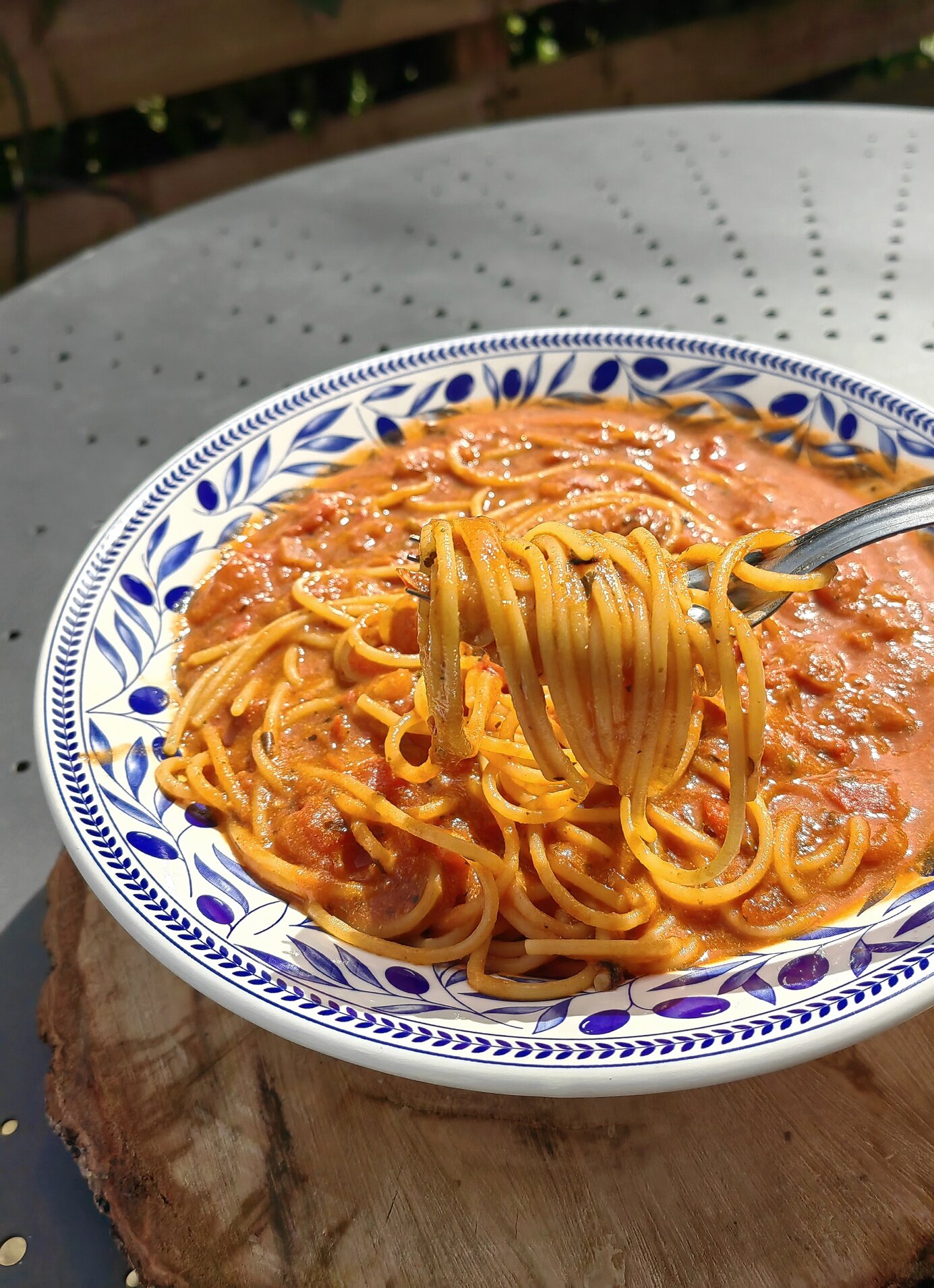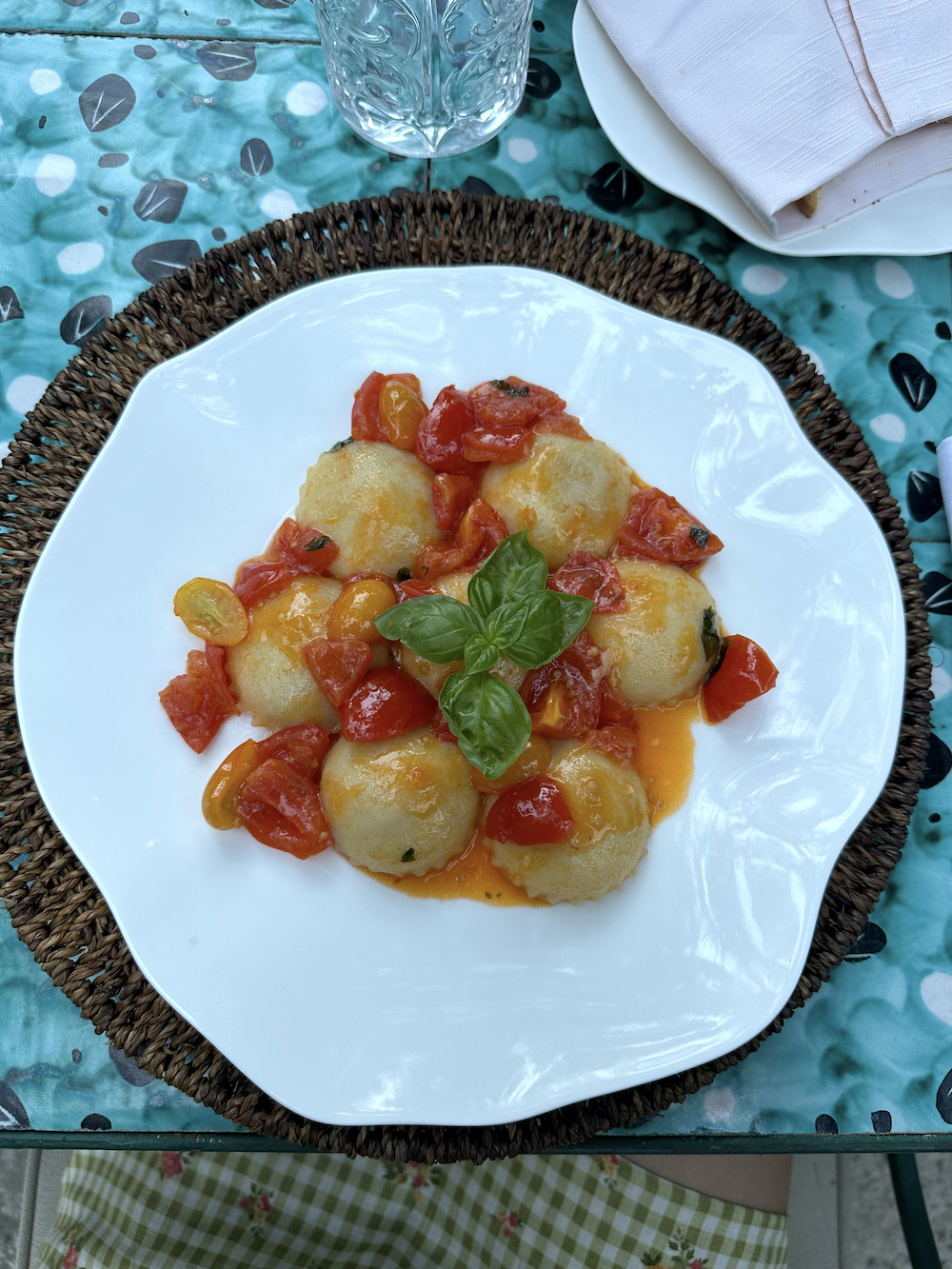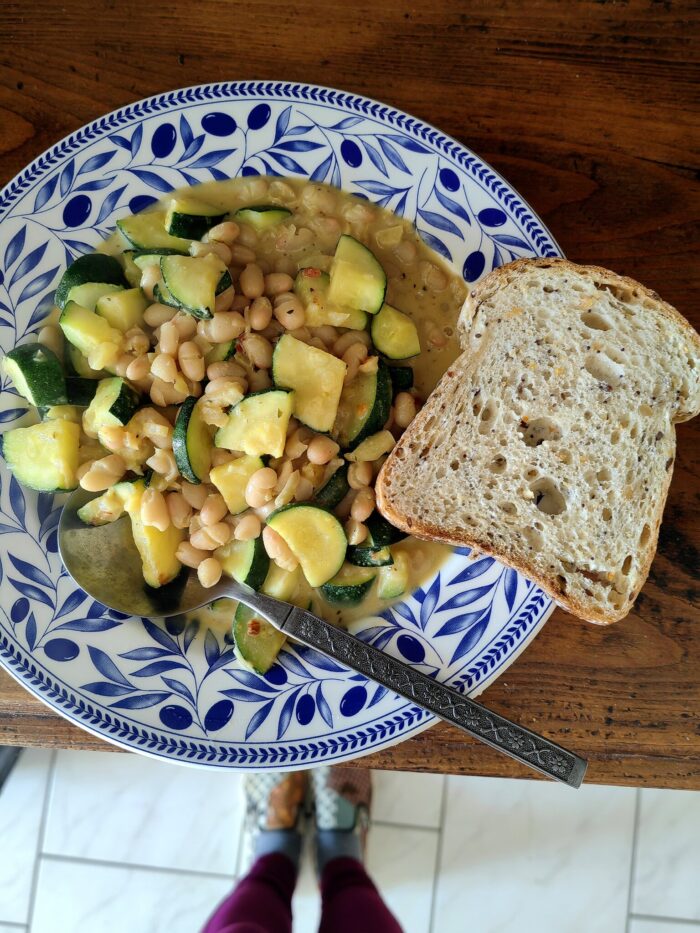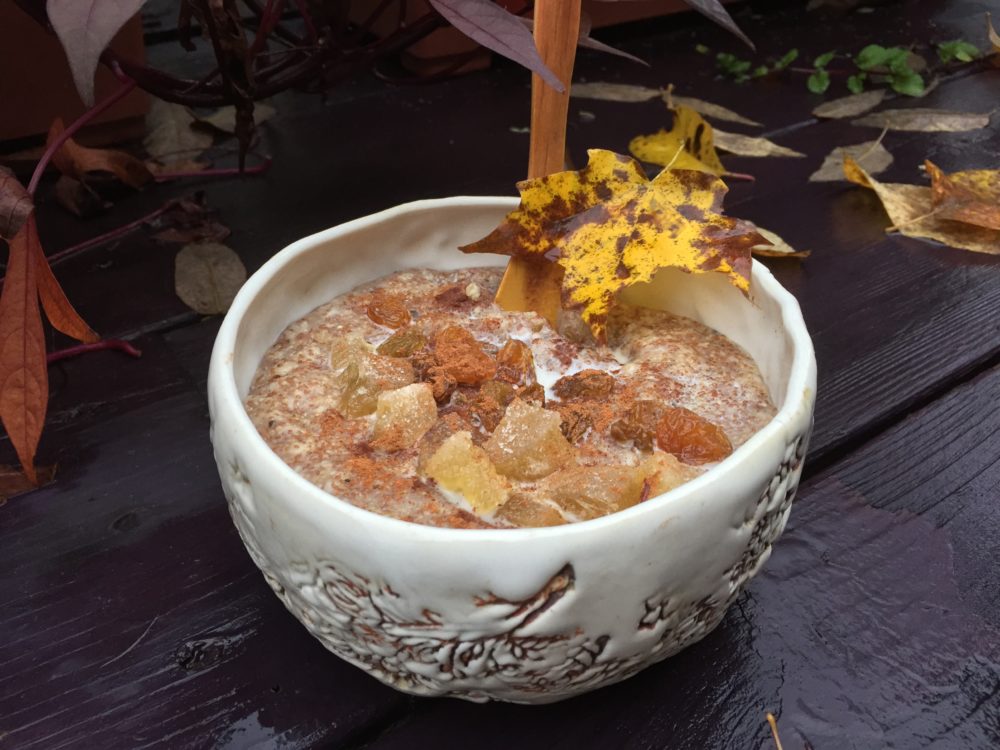A diverse and complex immune system creates a stronger barrier against disease. Specific bacteria target specific diseases and live in specific areas of the body. There are colonies that exist in the lymph, which are different to colonies that live in the breast tissue or gut or brain. Diversify your food choices and get your hands involved to deepen your connection to health, the earth and sustainability.
This dish is fun and visually appealing enough to serve as a canape at a plant-based BBQ, an appetiser course for a lunch or dinner or a quick pick-me-upper at the office. Main flavors are sour, buttery and sweet.
**Note: Ima be frank, Koreans would probably turn their noses up at this kimchi recipe but this is as quick and dirty as it gets while still delivering the rich rewards of bacteria and those delicious kimchi flavors. Let's get cracking.
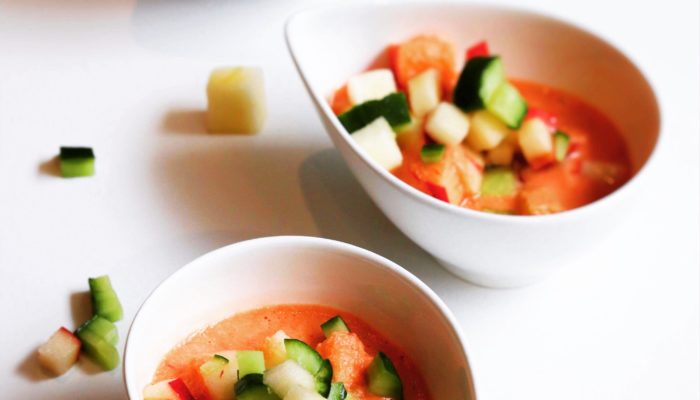

- Kimchi
- 1135g Napa cabbage
- 150g carrot
- 300g red cabbage
- Brine
- 50g red bell pepper
- 40g raw ginger root
- 40g raw garlic
- 10g chili pepper
- 40g green onion (white part only)
- 20g salt
- Gazpacho
- 60g kimchi
- 40g kimchi brine
- 50g soaked cashew
- 80g cherry tomato
- 80ml water
- Garnish
- 30g apple
- 30g avocado
- 30g baby cucumber

Directions
1. In a large bowl, tear up the Napa leaves, julienne the carrots and red cabbage and combine all together with salt, layering the salt between random layers. Massage, squeeze and massage. Then, leave it alone while you prepare the brine. Very slowly, the cellulose walls will break down and their juices will collect around the vegetables.
2. Peel and chop the brining ingredients: garlic, ginger, the white parts of the green onion, bell pepper and finally de-seed and chop the red chili pepper.
3. Combine those brining ingredients and blend to a paste.
4. Using gloved hands, thoroughly mix the brine into the salted vegetables then press into a mason jar. Use your fist to punch it down so that air bubbles escape. You want a third of the jar at the top to be empty.
5. Once you fill the jar two thirds up, top with any liquids from the bowl. The kimchi must be completely submerged under the liquid or the top will develop mold. A neat trick is to use flattish sterilized stones to keep it pressed down, or a small ceramic plate that can fit through the lip of the jar. If neither is an option, then slice up some thick circles of jicama or cucumber and layer those on top.
6. Seal the lid tightly and place in a dark corner of your kitchen for about 5–7 days. For the first 48 hours, do not touch the jar. After that, you will need to open it and “burp” the kimchi, which means that you open it to release gas build up and push the kimchi down again. If you don’t, it stands the risk of exploding. Don’t open it more than once or twice.
7. After 7 days, taste it. If it feels like it has reached the perfect acidity, refrigerate. If not, seal again and leave to ferment longer. Depend on your climate, it may take longer to ferment or if warm and humid, it may ferment really fast. You are looking for crisp vegetables and a sour, salty, spicy tang.
8. Kimchi can last in your fridge for eons as long as you take good care of it. Use clean utensils and seal the jar tightly. The longer you leave it in the fridge, the more sour it becomes, while all other flavors become more subdued. Older kimchi is more suitable for cooking as in soups, etc.
Gazpacho
1. We need specific ratios of kimchi separate from its brine. For this reason, squeeze the portion that we need for the gazpacho. We need 60g of squeezed kimchi. Next, measure out the required brine separately.
2. Along with the kimchi and its brine, add the rest of the gazpacho ingredients to the blender: Cashew, tomato and water. Blend on high speed until smooth and creamy.
3. Add salt or soy sauce to taste.
4. Refrigerate. Also note, this gazpacho can only be stored in the fridge for 2 days max. The acidity of the tomatoes become too intense when combined with kimchi so after two days, the flavor profile is unstable. If this happens sooner for you, add a splash of maple syrup to balance things out. You can also add some nut butter and blend again to integrate. Optimally, this is a kind of dish you prepare right before serving.
Garnish
Dice the apple, cucumber and avocado into perfect little cubes right before serving or they will oxidize. I do not recommend letting them sit in lemon juice as a way to avoid oxidation since the lemon will interfere with the complex acidity of the kimchi gazpacho.
Serve (two ways)
1. Place a steel ring mold in the middle of a shallow, wide soup bowl and arrange the garnish inside it in a tight circle then gently ladle gazpacho around it before removing the circle.
2. Or, you could simply add gazpacho to a cocktail glass or bowl then top with the garnish as in the picture.
Also by Prish: Pan-Roasted Potato & Cauliflower With Cashew Cream
Get more like this—Sign up for our daily inspirational newsletter for exclusive content!
__
Photo: Flavour Journey
